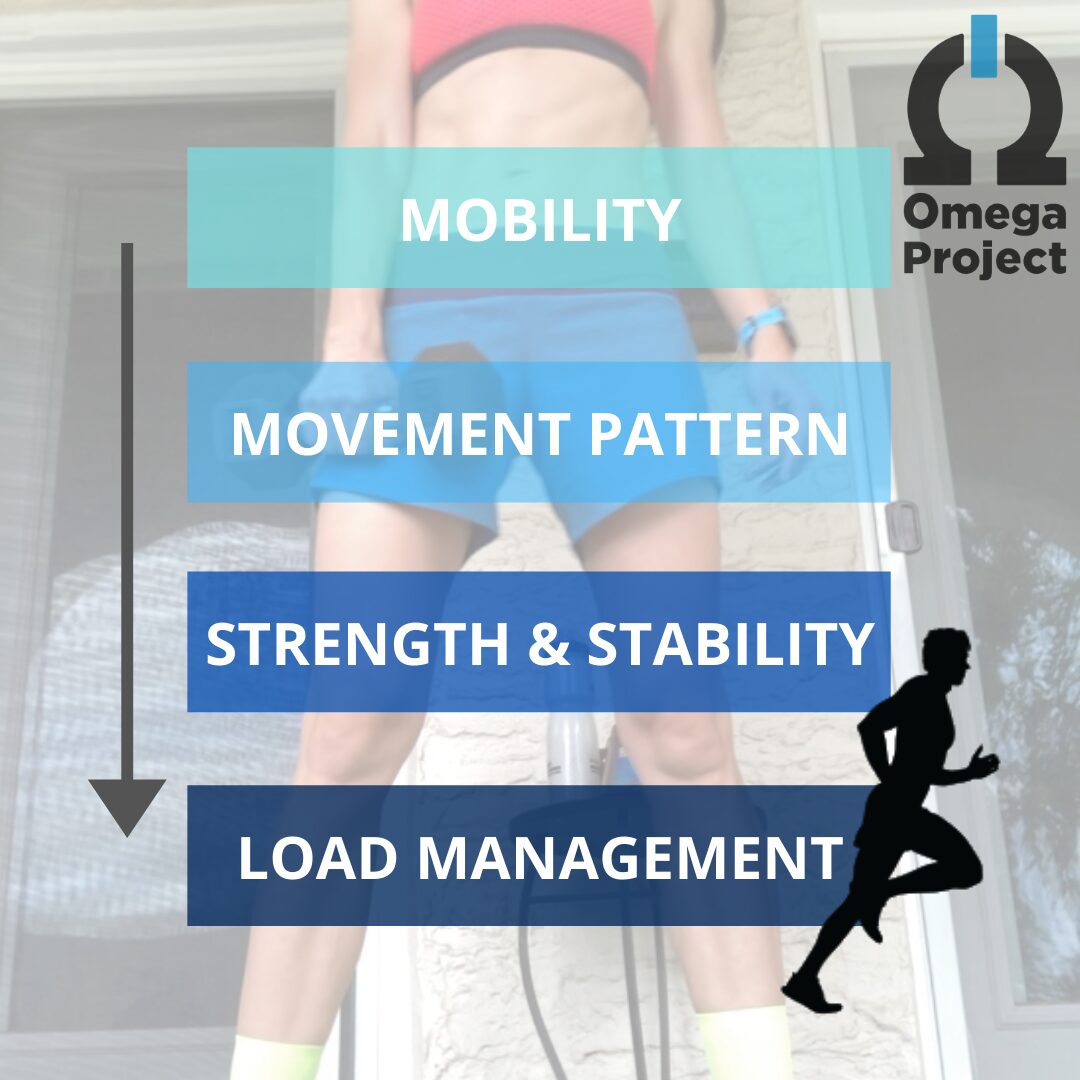Here we discuss the process of healing, starting with what happens when you’re injured all the way through to how you can return to your desired activity with confidence.
Over the next few weeks, we’re going to review the healing process of soft tissue injuries (the stubborn tendons and fascia, specifically) and bone injuries as these tend to be some of the most commonly mismanaged injuries. Failure to go through the proper rehab process can cause lingering pain, reinjury, and poor performance down the road.
Think about all the times you’ve taken a few days or a few weeks off only to return to running (or another sport) and have the same pain. Now what?!
We’ll discuss the stages of rehab (mobility, movement pattern, strength/stability, load management) that allow you to return from these injuries stronger than ever and avoid chronic pain and reinjury.
When you come see us, we take you through a full movement screen to assess your body as a whole (not just the injured body part) to ensure that we can identify the root cause of injury. Specifically, we’re going to look at what’s not moving well. This could be coming from a lack of mobility or a lack of strength/stability. Remember, you’re not always inflexible because your muscles are tight. You might not be able to obtain a position because you’re not strong enough or stable enough to get there. Based on what we see in the movement screen and what your main complaints are here are the steps we take next:
Mobility Our first priority is to regain mobility where we need it (whether that means improving muscular flexibility or the mobility of a joint).
Movement Pattern We then want you to be able to use that mobility in a functional way. For example, if we improve ankle mobility to improve knee pain we will have you squat (with good form) to use the new range of motion.
Strength and Stability The 3rd step is to strengthen in that position. This helps us to maintain mobility but also loads the tissue, which is ultimately what repairs the tissue and gets it ready to accept the loads of running or other higher level activity.
Load Management Finally, we want to systematically get you back into your sport or activity. It’s not good enough to just return to what you were doing when the pain is gone. Progressively increasing load (amount of weight you are lifting), adding plyometrics and following a protocol for returning to sport can help you return safely and avoid re-injury.
This, of course, is all in addition to learning about and helping you manage your training, your shoes, your nutrition, your sleep, your stress, etc to ensure that we are leaving no stone unturned.
It may seem like a long process, but sometimes all of this can happen in one day. To return to our example from earlier (knee pain), once we improve your ankle mobility and improve your squat form, you may notice an immediate improvement in pain with running. We will give you exercises to progress your movement gains and make suggestions on load management with running, practice or games (i.e. miles, intensity, frequency).
Learn more about Tendon Healing
Learn more about Bone Healing
Move on to the next step in the Injury Rehab Progression: Mobility

